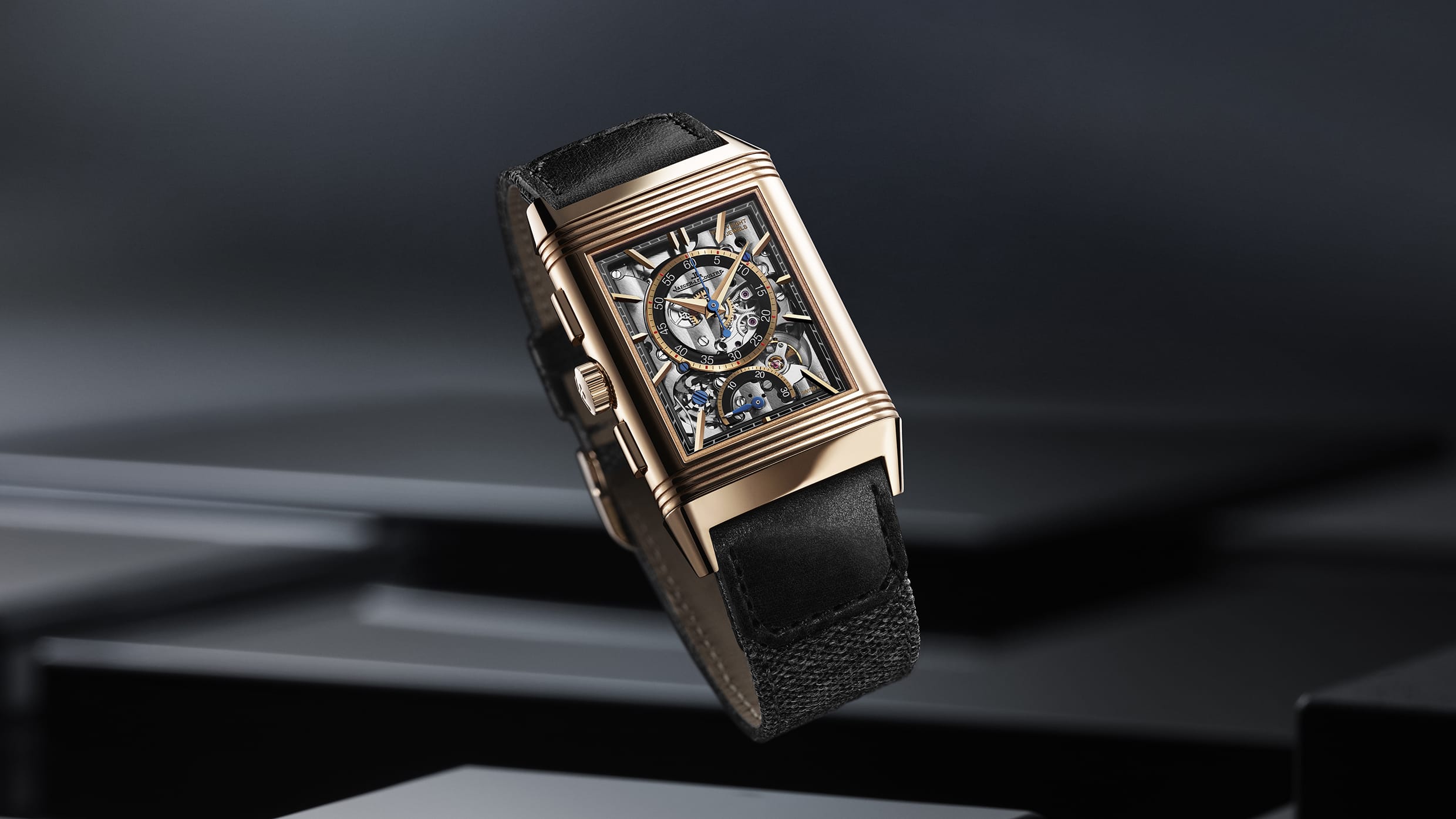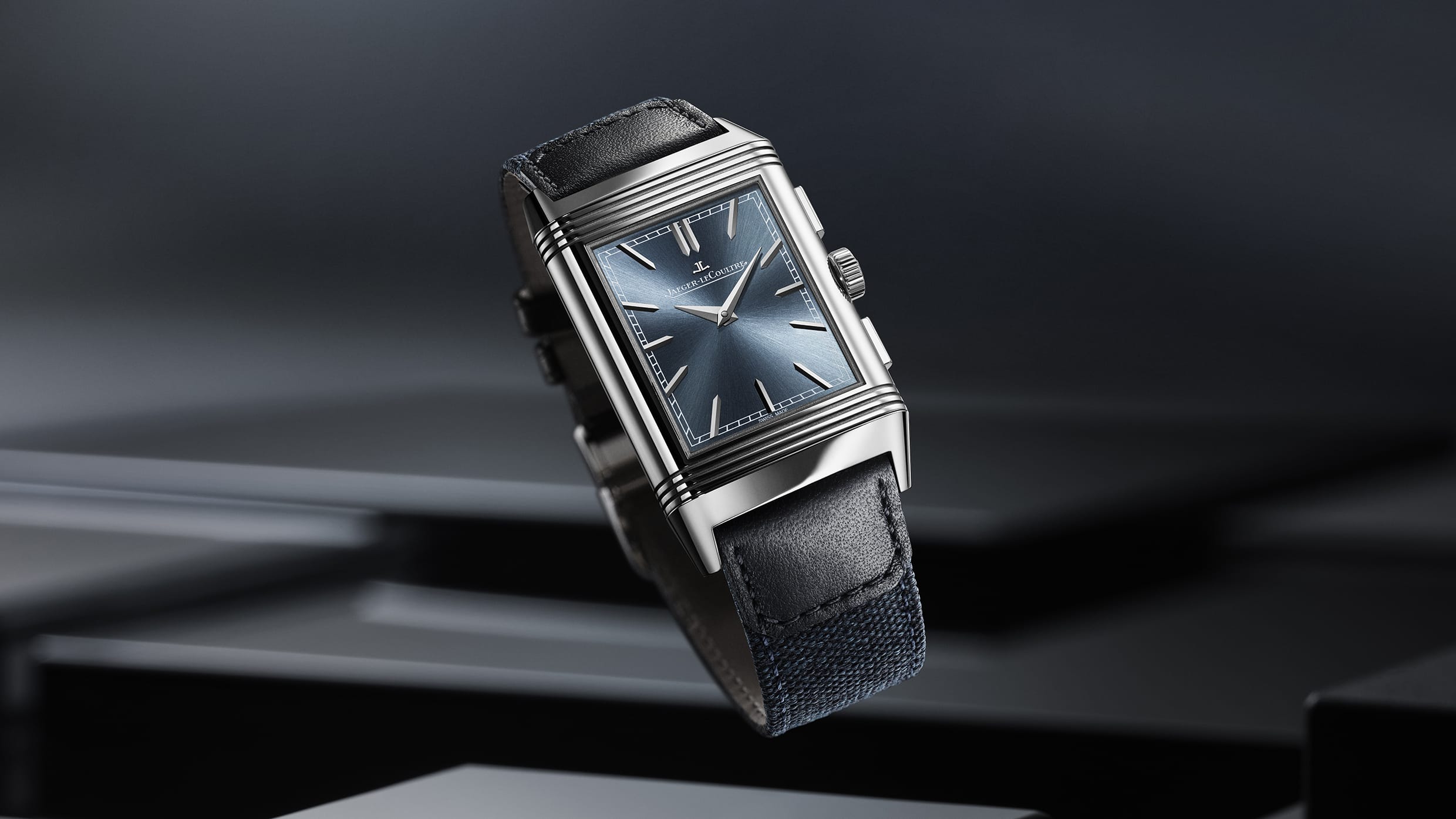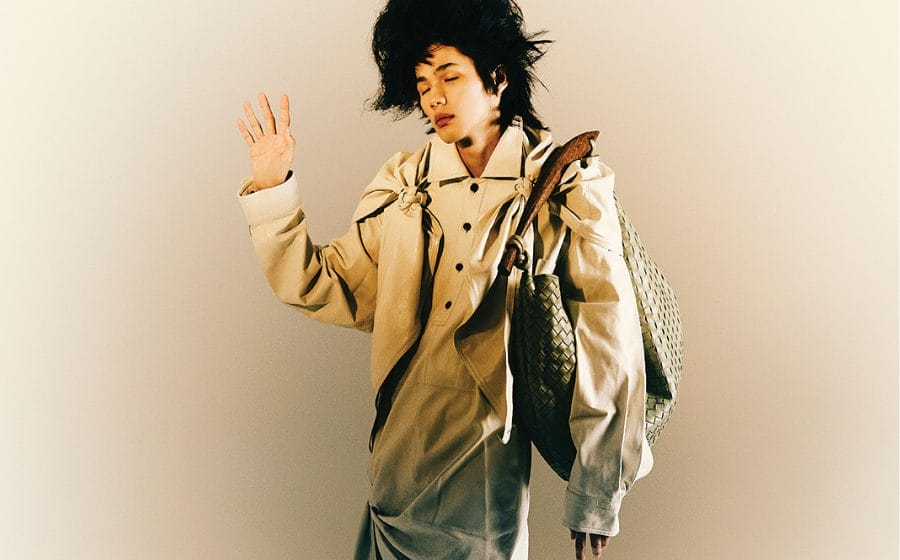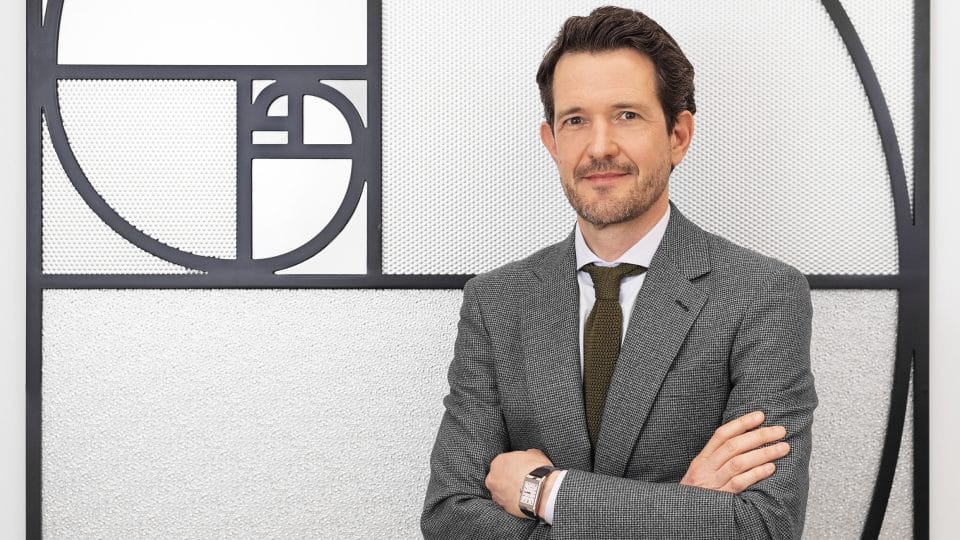 In conversation with Lionel Favre, Jaeger-Lecoultre Product Design Director
In conversation with Lionel Favre, Jaeger-Lecoultre Product Design Director
Jaeger-LeCoultre presents its latest embodiment of sports elegance with the Jaeger-LeCoultre Reverso Tribute Chronograph headlined by the new fully integrated hand-wound chronograph Jaeger-LeCoultre Calibre 860. The Maison unites the quintessential sportive chronograph complication with its inimitable reversible sports watch, first designed for polo players in 1931. Since the Jaeger-LeCoultre Reverso was released, it has been a mainstay in the world of horology. What exactly makes the reversible watch an icon amongst its peers, and what were some of the influences of the watch, you wonder? Men’s Folio caught up with Jaeger-LeCoultre product design director Lionel Favre in Watches and Wonders Geneva for the answers.
 You assume the role of product design director at Jaeger-LeCoultre. What are your responsibilities, and what is your typical day like?Lionel Favre: My responsibilities are about the products. I’m sort of the chief of coherence, and together with a designer, we work with the manufacture. Since the designer is in Geneva and the manufacture is in Le Sentier at Vallée de Joux, we meet weekly to discuss beautiful mechanisms and try to find new ideas. It’s always an interesting discussion between engineers and designers since both parties have different visions, and I try to find a balance and set the parameters. Some of my other time is spent purely on design — we try to find new shapes and crafts. It’s very design-oriented but in a classical way, starting with a pen. We sketch first before building with the computer. The last part of my work is more oriented toward the marketing vision of Jaeger-LeCoultre’s future. We have a vision about five or six years ahead, and since development times can be very long, it’s important to have a vision of what Jaeger-LeCoultre will be in five or six years.
You assume the role of product design director at Jaeger-LeCoultre. What are your responsibilities, and what is your typical day like?Lionel Favre: My responsibilities are about the products. I’m sort of the chief of coherence, and together with a designer, we work with the manufacture. Since the designer is in Geneva and the manufacture is in Le Sentier at Vallée de Joux, we meet weekly to discuss beautiful mechanisms and try to find new ideas. It’s always an interesting discussion between engineers and designers since both parties have different visions, and I try to find a balance and set the parameters. Some of my other time is spent purely on design — we try to find new shapes and crafts. It’s very design-oriented but in a classical way, starting with a pen. We sketch first before building with the computer. The last part of my work is more oriented toward the marketing vision of Jaeger-LeCoultre’s future. We have a vision about five or six years ahead, and since development times can be very long, it’s important to have a vision of what Jaeger-LeCoultre will be in five or six years.
People often talk about good product design. What do you think defines good product design when it comes to watches?
It’s very difficult because your taste changes. Sometimes you think it’s a bad design but five years later, you think, “Oh, it’s not so bad”. I don’t have judgments about what’s good or bad. You need to do what you feel and learn about the brand and its playground. It’s very important because you need to respect what people before you have designed, especially in a brand like Jaeger-LeCoultre with 190 years of history. You need to respect the past; from there, you can pursue and continue its history; this is what good design is for Jaeger-LeCoultre.
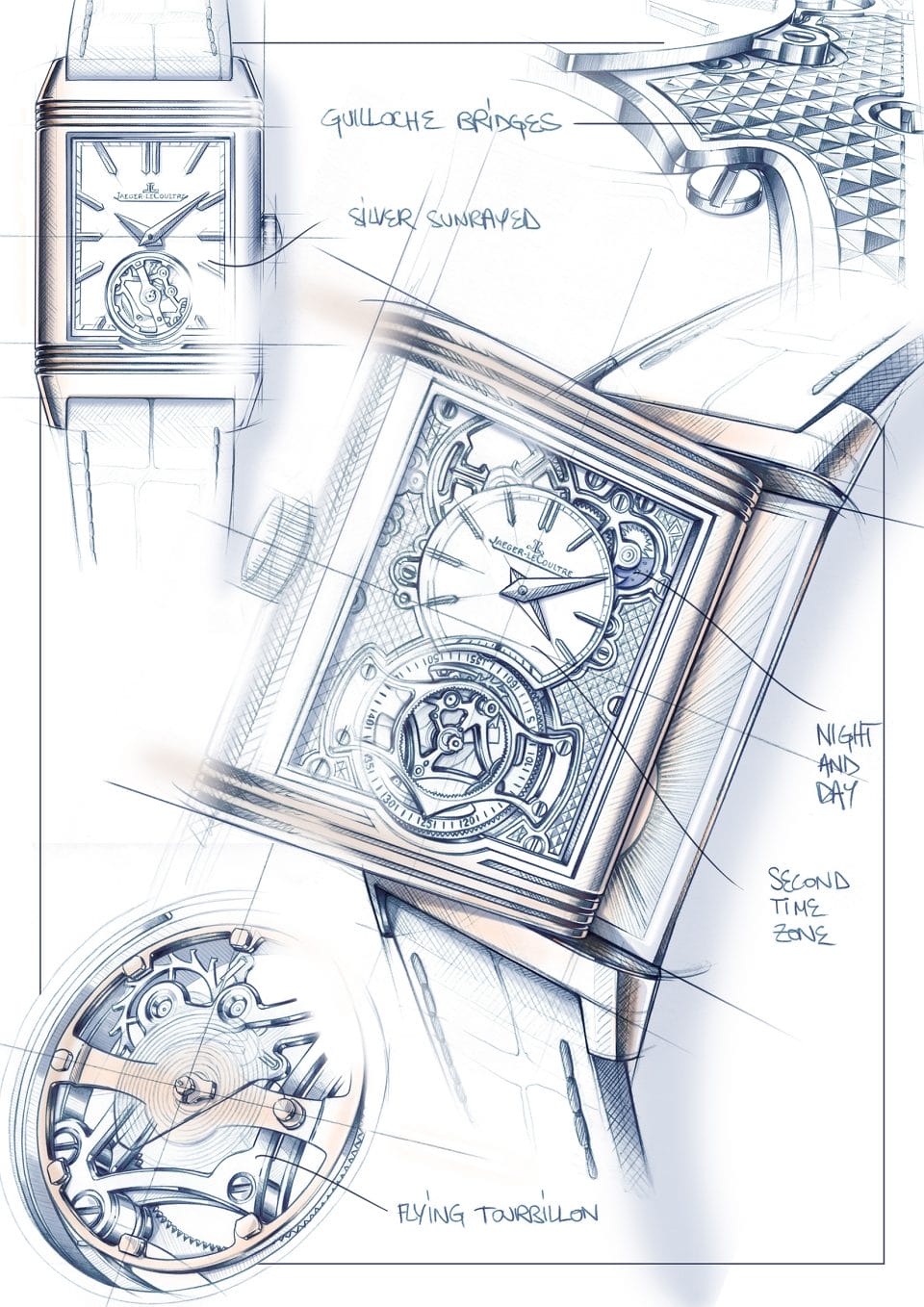 Sketch of the Jaeger-Lecoultre Reverso Tribute Duoface Tourbillon
Sketch of the Jaeger-Lecoultre Reverso Tribute Duoface Tourbillon
For a manufacture with so much history and tradition like Jaeger-LeCoultre, how do you express creativity and innovation in watch design while respecting the manufacture’s heritage?
That’s one of the main difficulties, but we are very lucky because we have a strong history that we can rely on. For example, the Reverso is linked to the art deco universe, which is fantastic. We can extrapolate and use the article as a starting point, and it’s easy to be modern with art deco because it’s more of a philosophy than a strict design. The philosophy of art deco is pure lines, geometry and modernity.
 This year, Jaeger-LeCoultre celebrates the Golden Ratio that governs the timeless design of the Reverso. Tell us a little about how it applies to Reverso’s design.
This year, Jaeger-LeCoultre celebrates the Golden Ratio that governs the timeless design of the Reverso. Tell us a little about how it applies to Reverso’s design.
In my mind, the Golden Ratio is more symbolic since it’s the frame and backbone of the Reverso. People know the Reverso as a sports watch designed for polo players in 1931. We don’t have proof that they had the golden ratio in their mind while designing the Reverso back then, but they designed the Reverso with an artistic sensibility, which defined the golden ratio. It’s very important that it was designed as a sports watch, but the Reverso had a strong idea of style and beautiful proportions. Today, the Reverso is becoming a more stylish watch than a sports watch.
The Reverso is essentially a box; how do you challenge your team to think outside the box regarding design or innovation for the Reverso?
Sometimes the engineers are very creative and have good ideas in terms of mechanisms. The designers try to adapt their ideas and sometimes challenge the engineers a bit more. We are not a rupture brand when it comes to thinking out of the box; we are a brand of continuity, refinements, elegance, proportion and craftsmanship. Our purpose is not to be original for the sake of being original; it’s about having original ideas and perfect execution.
 Jaeger-LeCoultre Calibre 860
Jaeger-LeCoultre Calibre 860
You mentioned continuity, and one of the big talking points this year is the launch of the Reverso Tribute Chronograph and the new integrated hand-winding chronograph Calibre 860. How long did it take for the team to design and prototype the watch?
It took two years, but we were lucky because we had the chronograph movement from 1996, which served as the base for this new development. It’s not something we started from scratch, we had an interesting idea, and that was the fact that we wanted to wear the chronograph. In the past, the chronograph was only a function on the Reverso, but we can now wear the watch on the chronograph side because there are hour and minute hands. There are a lot of novelties in this movement with a new gear train and power reserve.
Lastly, what is the defining spirit of the Reverso?
For me, the defining spirit of the Reverso is very design oriented. It’s one of the most beautiful geometric watches, but at the same time, this watch is made of round curves. It’s a paradox between the geometry, the square and rectangle pieces and the rounded curves. If you look at the Reverso, there are a lot of round curves (pointing to the watch case), and so are the areas around the lugs. There are a lot of rounded curves on the Reverso, but at the end, you have a feeling of a rectangle.
This interview article with Lionel Favre first appeared in the May 2023 issue of Men’s Folio Singapore. Click here to catch up with it.


